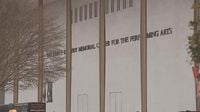The John F. Kennedy Center for the Performing Arts, long regarded as the nation’s cultural crown jewel, has entered a new era with the appointment of Stephen Nakagawa as its Director of Dance Programming. The announcement, made on August 25, 2025, was accompanied by a flurry of institutional changes, staff departures, and a promise of a bold new direction for dance at the D.C. landmark. For many in the arts community, the news has sparked both anticipation and unease, as Nakagawa steps into the spotlight amid a rapidly shifting landscape at one of America’s most influential performing arts venues.
"We are honored that Stephen Nakagawa will be joining the Kennedy Center full-time to lead Dance Programming," said Kennedy Center President, Ambassador Richard Grenell, in a statement quoted by multiple outlets including 7News and CelebrityAccess. Grenell described Nakagawa as a "celebrated ballerino who has been trained by world-renowned artistic directors and was a company dancer right here in Washington, D.C., with The Washington Ballet." Grenell added, "He is passionate about dance education and finding ways to reach new audiences."
Nakagawa, a dancer, choreographer, and educator, brings more than a decade of experience to his new post. His training began at the Academy of Russian Classical Ballet and continued through prestigious institutions such as the University of North Carolina School of the Arts, the Kirov Academy of Ballet, and the South Carolina Governor’s School for the Arts and Humanities. He has performed with Ballet West II in Salt Lake City and spent a decade as a company dancer with The Washington Ballet, where he was handpicked by artistic leaders Julie Kent and Victor Barbee for leading roles in full-length productions.
His stage credits are impressive, ranging from Lord Capulet in John Cranko’s Romeo and Juliet to Von Rothbart in Marius Petipa’s Swan Lake, and Drosselmeyer in Septime Weber’s The Nutcracker. Nakagawa’s choreography includes the 2021 premiere of Rising Sun with The Washington Ballet—a work created during a period of heightened violence against the Asian American and Pacific Islander community, as noted by The New York Times.
"It is a tremendous honor to join the Kennedy Center at such a pivotal moment for the performing arts," Nakagawa said in the official announcement. "The arts have always been at the heart of my life. I am eager to help inspire and uplift audiences, while ensuring dance continues to thrive as a vibrant and essential part of our culture and community."
But Nakagawa’s appointment comes amid controversy and upheaval. Just days before the announcement, the Kennedy Center abruptly dismissed its entire dance programming team, including former Director Jane Raleigh. According to 7News and The New York Times, three employees were fired without warning, and the Kennedy Center United Arts Workers union took to social media to express concern. The institution has since promised a "new direction for Dance programming," though details remain sparse.
Behind the scenes, the Kennedy Center itself is in the throes of transformation. The firing of longtime President Deborah Rutter earlier this year and the installation of Ambassador Richard Grenell as president were only the beginning. Former President Donald Trump, who named himself Chairman of the institution, has pledged to rid the center of what he called "woke" programming, tasking Grenell with rooting out "anti-American propaganda." The center’s board has been reconstituted, and the institution’s leadership now bears a distinctly political stamp.
Adding fuel to the fire, The New York Times reported that Nakagawa wrote a letter to Grenell prior to his appointment, expressing strong support for the Trump administration and voicing concern about what he called "radical leftist ideologies in ballet." Nakagawa wrote that he had become "increasingly concerned about the direction the ballet world is taking in America" and was distressed by the "rise of 'woke' culture" at the Washington Ballet and other companies. In his letter, Nakagawa declared, "I would love to be part of a movement to end the dominance of leftist ideologies in the arts and return to classical ballet’s purity and timeless beauty." Three sources who saw the letter confirmed its contents to The New York Times.
When asked about the letter, Kennedy Center spokeswoman Roma Daravi described it as "private" and suggested that the reporting was a "hit piece." She added, "He has devoted his entire life to the performing arts and wants nothing more than to see the industry thrive which is why he has joined our institution in such a time as this." Nakagawa himself did not respond to requests for comment.
For staff and artists at the Kennedy Center, the changes have prompted uncertainty about the future of dance at the institution. According to The New York Times, the three recently dismissed employees said Grenell had urged them to develop programming that was more "broadly appealing," citing the TV show "So You Think You Can Dance" as an example. The Kennedy Center has not yet outlined how Nakagawa’s vision will shape future seasons, but the upcoming dance season—programmed under the previous leadership—will proceed as scheduled, featuring top companies such as New York City Ballet, American Ballet Theater, and Martha Graham Dance Company.
Nakagawa’s résumé is filled with artistic achievement, but his administrative experience is less clear. His online profile lists extensive performance and choreography credits, as well as teaching roles at institutions like the Metropolitan Ballet Theater, McLean School, and Warrenton Ballet Center. He has also served as a guest artist with International Ballet in Greenville, South Carolina, and won first place in the Youth America Grand Prix regional competition in 2013. However, his background in curating or managing large-scale programming appears limited.
The stakes for the Kennedy Center—and for Nakagawa—are high. The institution’s dance programming has long been a beacon for the art form nationally, and the abrupt shift in leadership has raised questions about the direction and values that will guide its future. The union representing arts workers at the Kennedy Center has called for transparency and dialogue, while supporters of the new leadership argue that a fresh perspective is needed to broaden the center’s appeal and reaffirm its commitment to artistic excellence.
As the Kennedy Center prepares for its next dance season, the eyes of the performing arts world remain fixed on Washington. Will Nakagawa’s appointment usher in a renaissance for classical ballet, as his letter suggests? Or will the changes at the nation’s most prominent cultural institution deepen existing divisions within the arts community? For now, one thing is certain: the Kennedy Center’s new era has begun, and its impact will be closely watched by artists, audiences, and advocates across the country.


